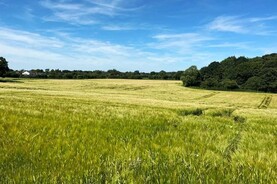The presence of a "green drought" is very much a real thing for some farmers and the number of farmers it affects will likely increase over the week.
Soil moisture deficits (SMD) are between 20-60mm in the south and south east and expected to grow by 10-15mm this week due to the severe lack of rainfall in some areas. Where SMD is between 30-50mm, growth is negatively impacted, but where the SMD lies between 50-70mm, growth is severely impacted. Anything over 70mm is considered a drought.
It’s probably not helping that the lack of rain seems to be affecting the direst soils. Cork airport recorded just 3% of normal rainfall levels between 2-8 July, with Belmullet seeing 137% of the norm.
What to do when tight on grass
The key thing is to continue regular measurements, even when growth is poor. While it might be a bit of a depressing exercise, it’s important to know whether you are eating further in to your grass covers and potentially running out of grass entirely.
After this, the goal is to reduce demand by doing one of three things; supplementation, increasing the land area or reducing stock numbers. Supplementation is easiest done in dairy cows, with them coming through a parlour twice a day normally, allowing for mel to be fed in parlour and silage to be fed indoors if needed. Where there are store beef cattle on farm, consider either moving these off farm now or introduce concentrates.
Increasing your land area essentially means grazing ground closed up for silage. If there is good leafy covers on these swards, then grazing these might be a good option to get you out of a hole. However, if covers are heavy and utilisation will be poor, then it is probably best to let this grow on and feed out baled silage in a ring feeder etc. While it is more costly, utilisation and intake will be better.
It’s important that spring calving cows do not get pinched with energy intake at the minute with the stage of pregnancy they are at.






 This is a subscriber-only article
This is a subscriber-only article










SHARING OPTIONS: